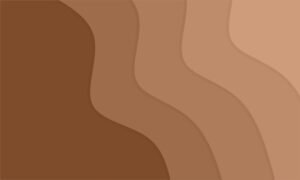Shades of Purple: Hex Color Codes and Palette

Shades of Purple
Shades of purple are among the most versatile and enchanting colors in the design world. With their ability to evoke emotions ranging from tranquility to creativity, these colors are frequently chosen for both artistic and practical applications. From rich royal purples to soft lavender tones, this guide explores the mesmerizing range of purple hues, their hex codes, and how to incorporate them into your projects.
What Are Shades of Purple?
Purple, a blend of red and blue, encompasses a broad spectrum of shades. These tones range from deep, dark colors like indigo to lighter, pastel varieties like lilac. Each shade carries its unique vibe and emotional resonance.
In color theory, purple often symbolizes luxury, wisdom, and mystery. Designers and artists love it for its versatility in creating themes of creativity, elegance, and calmness.
Why Hex Codes Matter in Color Selection
Hex codes, short for hexadecimal codes, are essential for representing colors digitally. These six-digit codes, starting with a hash symbol (#), make it easy to reproduce exact shades in digital designs. For example, the hex code for a soft lavender purple might be #E6E6FA, while a darker shade like plum could be #8E4585.
Using hex codes ensures consistency in branding, web design, and other creative projects.
Popular Shades of Purple and Their Hex Codes
Lavender (#E6E6FA)

Lavender is a light and calming shade of purple. Its soft hue is ideal for creating peaceful designs, often used in wellness and beauty branding.
Amethyst (#9966CC)

Named after the gemstone, amethyst is a mid-tone purple that adds elegance and a sense of luxury to any palette. It works beautifully in jewelry designs and upscale themes.
Royal Purple (#7851A9)

This shade exudes sophistication and has historical ties to royalty and wealth. Its richness makes it perfect for logos and high-end product packaging.
Plum (#8E4585)

Plum is a darker, muted purple that balances boldness with warmth. It pairs well with neutral tones and is often used in fashion and interior design.
Mauve (#E0B0FF)

Mauve offers a romantic and soft take on purple. Its delicate hue makes it a popular choice for weddings, event themes, and feminine designs.
Violet (#8A2BE2)

A bright and vibrant shade, violet injects energy and creativity into projects. It’s often associated with imagination and innovation.
Creating a Purple Palette
A cohesive color palette combines various shades of purple with complementary tones. Below is an example of how to structure a purple-themed palette:
| Shade | Hex Code | Description |
|---|---|---|
| Lavender | #E6E6FA | Light, calming |
| Deep Purple | #673AB7 | Bold, intense |
| Lilac | #C8A2C8 | Soft, pastel |
| Grape | #6F2DA8 | Rich, medium-tone |
| Periwinkle | #CCCCFF | Light, bluish-purple |
This palette offers a balance of light and dark tones, ensuring versatility for different projects.
How to Use Shades of Purple in Design
Web Design
Purple shades create visually appealing websites. Use lighter tones like lavender for backgrounds and darker purples for accents like buttons and headers.
Fashion and Textiles
From plum dresses to lilac scarves, shades of purple bring sophistication and creativity to clothing and accessories. They can suit both casual and formal styles.
Interior Design
In-home decor, purples can create either a bold statement or a calming retreat. For instance, deep purple throw pillows paired with soft lavender walls can add depth and harmony to a living space.
Marketing and Branding
Brands often use purple to convey creativity or luxury. Think of Cadbury’s rich purple packaging or Yahoo’s vibrant violet logo—these shades stick in people’s minds.
The Emotional Impact of Purple
Each shade of purple has a distinct emotional effect. For instance:
- Lavender: Promotes relaxation and peace, often used in spas.
- Royal Purple: Conveys sophistication and exclusivity.
- Amethyst: Inspires creativity and introspection.
Understanding these effects can help designers make strategic choices when creating visuals.
Tips for Choosing the Perfect Shade of Purple
- Consider the Context: Determine the tone you want to set. Soft purples suit relaxing themes, while dark purples work for luxury.
- Pair with Complementary Colors: Green and yellow are excellent complements to purple tones.
- Test on Different Backgrounds: Shades may appear differently on light or dark backgrounds.
Tools to Help You Explore Purple Shades
Color Palette Generators
Online tools like Coolors and Adobe Color make it easy to experiment with purple shades and create harmonious palettes.
Hex Code Pickers
Applications like Canva or Photoshop let you input hex codes to visualize specific shades in real time.
Mobile Apps
Apps like ColorSnap can capture purple shades from real-life objects, providing their exact hex codes.
The Science Behind Purple’s Allure
Purple has a rare presence in nature, which makes it feel unique and intriguing. Historically, producing purple dyes was expensive, further elevating its status. This rarity contributes to its perception as a color of importance and exclusivity.
Shades of Purple for Digital Media
In digital spaces, purple shades are excellent for drawing attention without being overly aggressive. For example:
- Call-to-action buttons: Use a vibrant shade like violet for high visibility.
- Backgrounds: A subtle gradient using mauve and lavender can create a calming effect.
How to Incorporate Purple into Seasonal Themes
Spring
Lavender and lilac work beautifully for spring designs, evoking blooming flowers and renewal.
Summer
Bright purples like violet energize summer themes, often paired with sunny yellows.
Fall
Deeper shades like plum and grape complement the earthy tones of autumn.
Winter
Amethyst and royal purple create an elegant and cozy feel, perfect for holiday designs.
FAQs
What is the significance of hex codes for shades of purple?
Hex codes ensure color consistency in digital designs, helping designers maintain the exact hue across platforms.
How do shades of purple affect mood?
Lighter purples like lavender promote calmness, while deeper shades like plum evoke luxury and warmth.
What are some complementary colors for purple?
Yellow, green, and gold are excellent complements, creating striking contrasts.
Can purple be used in professional branding?
Absolutely. Purple is often used to represent creativity, innovation, or luxury, making it ideal for a range of industries.
Which shade of purple is best for modern interiors?
Deeper purples like grape add sophistication, while lilac or lavender create a serene, modern look.
Are there tools to create a custom purple palette?
Yes, tools like Coolors and Adobe Color allow you to experiment with purple shades and build cohesive palettes.
Conclusion
Shades of purple, with their hex codes and palettes, offer endless possibilities for creativity and expression. Whether you’re designing a website, decorating a space, or curating a brand, purple’s diverse tones bring depth, elegance, and imagination. By understanding the emotional and aesthetic impact of these hues, you can unlock their full potential in your projects.







